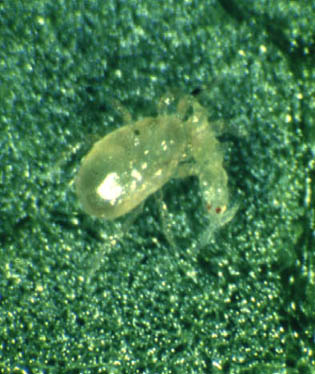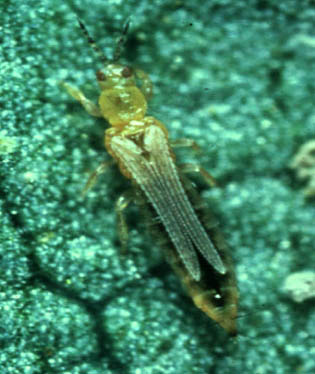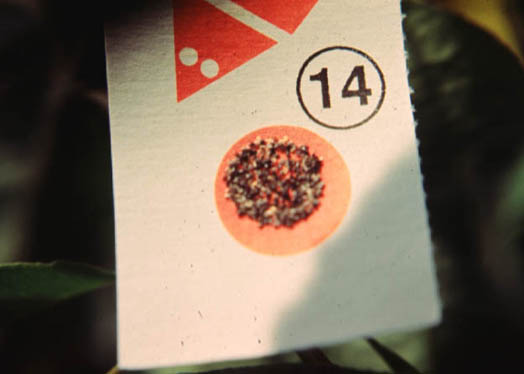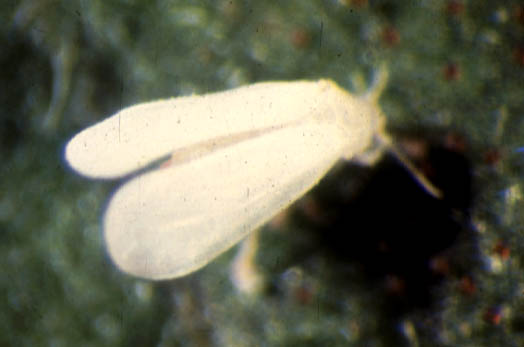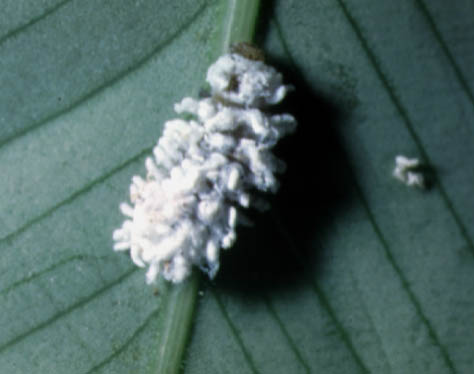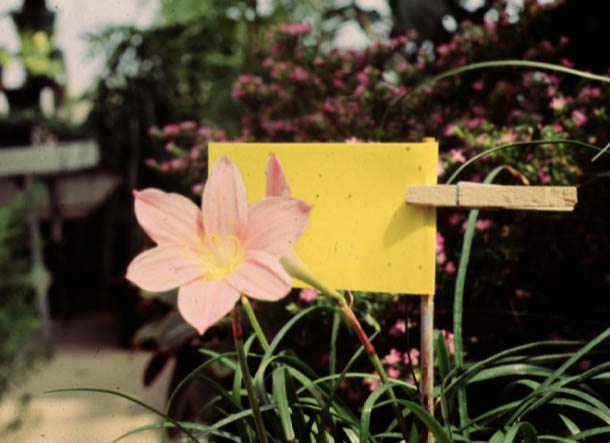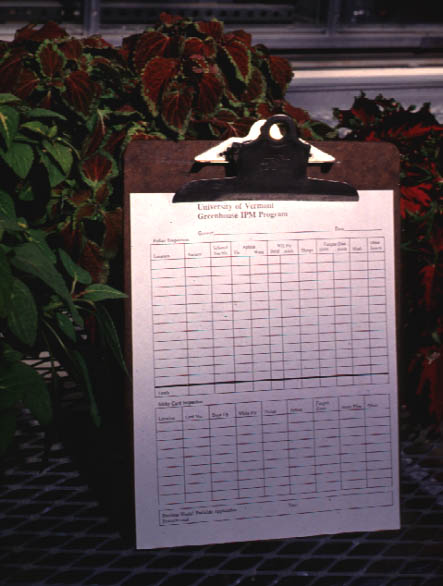Biological controls used in the greenhouse:
- Amblyseius cucumeris
- Encarsia formosa
- Cryptolaemus montrouzieri
Bio-control agent: Amblyseius cucumeris, Predatory Mite
Pest controlled: Frankliniella occidentalis, Western Flower Thrips
Amblyseius cucumeris devouring a thrips. | The thrips by itself. |
These predatory mites are used to help us control thrips populations in the greenhouse. They arrive in a container mixed with bran, a carrier that helps us to sprinkle out controlled amounts of these tiny predators.
Late in the day when the sun is low in the sky, we release Amblyseius cucumeris by walking through the greenhouse, pouring out the mites onto various thrips-infested plants. A. cucumeris is better at attacking thrips on leaves than in the flowers where they like to feed. Once released, the mites procede to scurry around the leaf surfaces, eating as many of the 1st instar thrips as they can find. The later developmental stages are too large for these mites to eat. Eventually, adults lay eggs among thrips which hatch into nymphs. These nymphs consume many immature thrips during their development into adult mites. A. cucumeris will continue to reproduce and control thrips populations as long as there is an alternative food source, like pollen, available when thrips polulations are low.
Bio-control agent: Encarsia formosa, a Greenhouse Whitefly parasitoid wasp
Pest controlled:Trialeurodes vaporariorum, Greenhouse Whitefly
Out of the little black parasitized whiteflies stuck to this paper will hatch adult Encarsia formosa. | Greenhouse whitefly adult, up-close. |
Encarsia formosa is a wasp that we release in our greenhouse to control whiteflies.They arrive as wasp pupae inside of parasitized whitefly pupae that are stuck to these cards.The adults hatch out once we hang these cards on plants that have whitefly problems. When the adult wasps emerge, they seek out the 2nd through 4th immature whitefly stages to parasitize.Each female wasp can parasitze up to 200 immature whiteflies.This parasitic wasp kills many whiteflies in our greenhouse and helps us to keep the pest population under control.
Bio-control agent: Cryptolaemus montrouzieri, the Mealybug destroyer.
Pest controlled: Pseudococcus longispinus, Long-tailed Mealybug
Photo: Mealybugs make this waxy mess on the underside of leaves, and weaken plants.
Cryptolaemus montrouzieri are ladybug beetles that are mostly black in color with dull orange head and thorax. The adult beetles will dine on mealybugs, preferably young ones, as well as other greenhouse pests. Then they lay their eggs in the cottony-white egg masses of mealybugs. The young hatch out and feed on young mealybugs and eggs while they grow. The immature "crypts" look a lot like mealybugs themselves, so scout carefully after releasing this predator in your greenhouse.
Some of the tools we use in managing insect populations
Yellow sticky cards attract and capture the winged, adult forms of greenhouse pests.
We carefully record what we find stuck to the cards on these forms, and use these forms when planning our pest management strategies...


